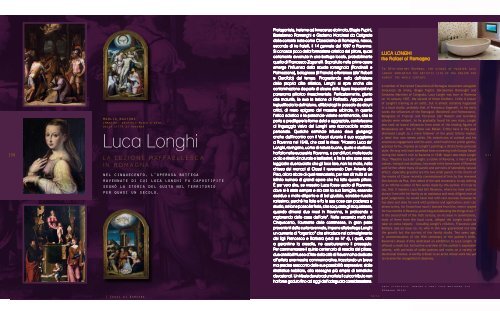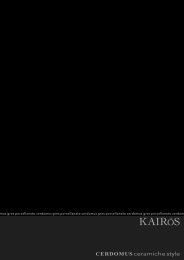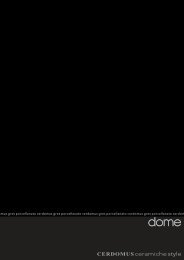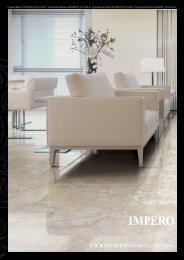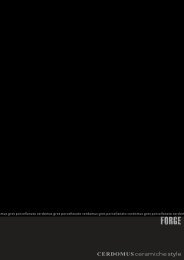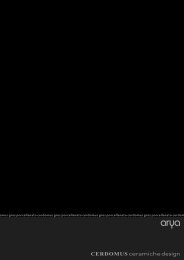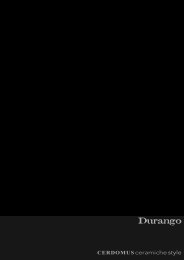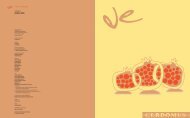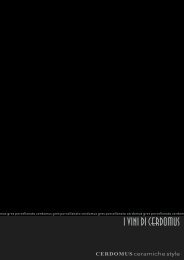You also want an ePaper? Increase the reach of your titles
YUMPU automatically turns print PDFs into web optimized ePapers that Google loves.
[30<br />
manlio rastoni<br />
immagini: archivio museo d’arte<br />
della città <strong>di</strong> ravenna<br />
Luca Longhi<br />
LA LEZIONE RAFFAELLESCA<br />
IN R OMAGNA<br />
nel cinquecento, l’operosa bottega<br />
ravennate <strong>di</strong> cui luca longhi fu capostipite<br />
segnò la storia del gusto nel territorio<br />
per quasi un secolo.<br />
I Sensi <strong>di</strong> <strong>Romagna</strong><br />
Protagonista, insieme ad Innocenzo da Imola, Biagio Pupini,<br />
Bartolomeo Ramenghi e Girolamo Marchesi da Cotignola<br />
della corrente nota come Classicismo <strong>di</strong> <strong>Romagna</strong>, nasce,<br />
secondo <strong>di</strong> tre fratelli, il 14 gennaio del 1507 a Ravenna.<br />
Si conosce poco della formazione artistica del pittore, quasi<br />
certamente avvenuta in una bottega locale, probabilmente<br />
quella <strong>di</strong> Francesco Zaganelli. Soprattutto nelle prime opere<br />
emerge l’influenza della scuola romagnola (Ron<strong>di</strong>nelli e<br />
Palmezzano), bolognese (il Francia) e ferrarese (de’ Roberti<br />
e Garofalo) del tempo. Progredendo nella definizione<br />
della propria cifra stilistica, Longhi si apre anche alla<br />
contaminazione da parte <strong>di</strong> alcune delle figure imperanti nel<br />
panorama pittorico rinascimentale. Particolarmente, giunto<br />
alla maturità, fa sua la lezione <strong>di</strong> Raffaello. Appare però<br />
ingiustificata la definizione, affibbiatagli in passato da alcuni<br />
critici, <strong>di</strong> mero epigono del maestro urbinate, in quanto<br />
l’ottica eclettica e la personale visione sentimentale, che lo<br />
porta a pre<strong>di</strong>ligere le forme dolci e aggraziate, conferiscono<br />
al linguaggio visivo del Longhi una riconoscibile matrice<br />
personale. Qualche seminale influsso deve giungergli<br />
anche dall’incontro con il Vasari durante il suo soggiorno<br />
a Ravenna nel 1548, che così lo ritrae: “Maestro Luca de’<br />
Longhi, ravingano, uomo <strong>di</strong> natura buono, queto e stu<strong>di</strong>oso,<br />
ha fatto nella sua patria Ravenna, e per <strong>di</strong> fuori, molte tavole<br />
a olio e ritratti <strong>di</strong> naturale e bellissimi; e fra le altre sono assai<br />
leggiadre due tavolette che gli fece fare, non ha molto, nella<br />
chiesa dei monaci <strong>di</strong> Classi il reverendo Don Antonio da<br />
Pisa, allora abate <strong>di</strong> quel monasterio; per non <strong>di</strong>r nulla <strong>di</strong> un<br />
infinito numero <strong>di</strong> gran<strong>di</strong> opere che ha fatto questo pittore.<br />
È per vero <strong>di</strong>re, se maestro Luca fosse uscito <strong>di</strong> Ravenna,<br />
dove si è stato sempre e sta con la sua famiglia, essendo<br />
assiduo e molto <strong>di</strong>ligente e <strong>di</strong> bel giu<strong>di</strong>zio, sarebbe riuscito<br />
rarissimo; perché ha fatto e fa le sue cose con pacienza e<br />
stu<strong>di</strong>o; ed io ne posso far fede, che so quanto gli acquistasse,<br />
quando <strong>di</strong>morai due mesi in Ravenna, in praticando e<br />
ragionando delle cose dell’arte”. Nella seconda metà del<br />
Cinquecento, l’aumento delle commesse, in gran parte<br />
provenienti dalla curia ravennate, impone alla bottega Longhi<br />
un aumento <strong>di</strong> “organico” che si traduce nel coinvolgimento<br />
dei figli Francesco e Barbara (ve<strong>di</strong> ee N° 4), i quali, oltre<br />
a garantirne la crescita, ne assicureranno il proseguio.<br />
Per commemorare il quinto centenario <strong>di</strong> nascita del pittore,<br />
due anni fa il Museo d’Arte della città <strong>di</strong> Ravenna ha de<strong>di</strong>cato<br />
all’artista una mostra commemorativa, tracciando un breve<br />
ma preciso resoconto delle sue possibilità espressive: dalla<br />
ritrattistica nobiliare, alla rassegna più ampia <strong>di</strong> tematiche<br />
devozionali. Un tributo dovuto ad un artista il cui contributo non<br />
ha forse goduto fino ad oggi dell’adeguata considerazione.<br />
Arte<br />
LUCA LONGHI<br />
the Rafael of <strong>Romagna</strong><br />
In 16th-century Ravenna, the stu<strong>di</strong>o of painter Luca<br />
Longhi dominated the artistic life of the region for<br />
almost the whole century.<br />
A member of the famed Classicismo <strong>di</strong> <strong>Romagna</strong> movement alongside<br />
Innocenzo da Imola, Biagio Pupini, Bartolomeo Ramenghi and<br />
Girolamo Marchesi of Cotignola, Luca Longhi was born in Ravenna<br />
on 14 January 1507, the second of three brothers. Little is known<br />
of Longhi’s training as an artist, but it almost certainly happened<br />
in a local stu<strong>di</strong>o, probably that of Francesco Zaganelli. In his early<br />
works the influences of the Romagnol (Ron<strong>di</strong>nelli and Palmezzano),<br />
Bolognese (il Francia) and Ferrarese (de’ Roberti and Garofalo)<br />
schools were evident. As he gradually found his own style, Longhi<br />
also took on board influences from some of the lea<strong>di</strong>ng figures of<br />
Renaissance art. One of these was Rafael. Critics have in the past<br />
<strong>di</strong>smissed Longhi as a mere follower of the great Urbino master,<br />
a label that now seems unfair. His eclecticism of outlook and his<br />
emotional engagement with his work, which led him to prefer gentle,<br />
gracious forms, impress on Longhi’s paintings a <strong>di</strong>stinctively personal<br />
style. He may well have benefited from a meeting with Giorgio Vasari<br />
during the latter’s visit to Ravenna in 1548. Vasari described Longhi<br />
thus: “Maestro Luca de’ Longhi, a native of Ravenna, a man of good<br />
nature, tranquil and stu<strong>di</strong>ous, has made in his home town of Ravenna<br />
and further afield many oil panels and portraits of splen<strong>di</strong>dly natural<br />
effect; especially graceful are the two small panels in the church of<br />
the monks of Classe recently commissioned of him by the reverend<br />
Don Antonio da Pisa, then abbot of the said monastery; to say nothing<br />
of an infinite number of fine works made by this painter. It’s true to<br />
say, that if maestro Luca had left Ravenna, where he lives and has<br />
always lived with his family as an assiduous and most <strong>di</strong>ligent man of<br />
good judgement, he would have met with rare success; because he<br />
has done and does his work with patience and application; and I can<br />
attest to this, for I know how much I learned from him, when I stayed<br />
for two months in Ravenna, practising and debating the things of art.”<br />
In the second half of the 16th century, an increase in commissions,<br />
most of them from the local curia, obliged the Longhi stu<strong>di</strong>o to<br />
take on extra helpers – inclu<strong>di</strong>ng Longhi’s children, Francesco and<br />
Barbara (see ee issue no. 4), who in this way guaranteed not only<br />
the growth but the survival of the family stu<strong>di</strong>o. Two years ago,<br />
in commemoration of the fifth centenary of the painter’s birth,<br />
Ravenna’s Museo d’Arte de<strong>di</strong>cated an exhibition to Luca Longhi. It<br />
offered a small but instructive overview of the painter’s expressive<br />
talents, with portraits of noble patrons and works on a variety of<br />
devotional themes. A worthy tribute to an artist whose work has yet<br />
to receive the recognition it deserves.<br />
Arte significa: dentro a ogni cosa mostrare Dio.<br />
Hermann Hesse<br />
31]


